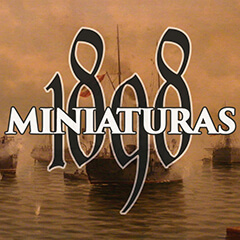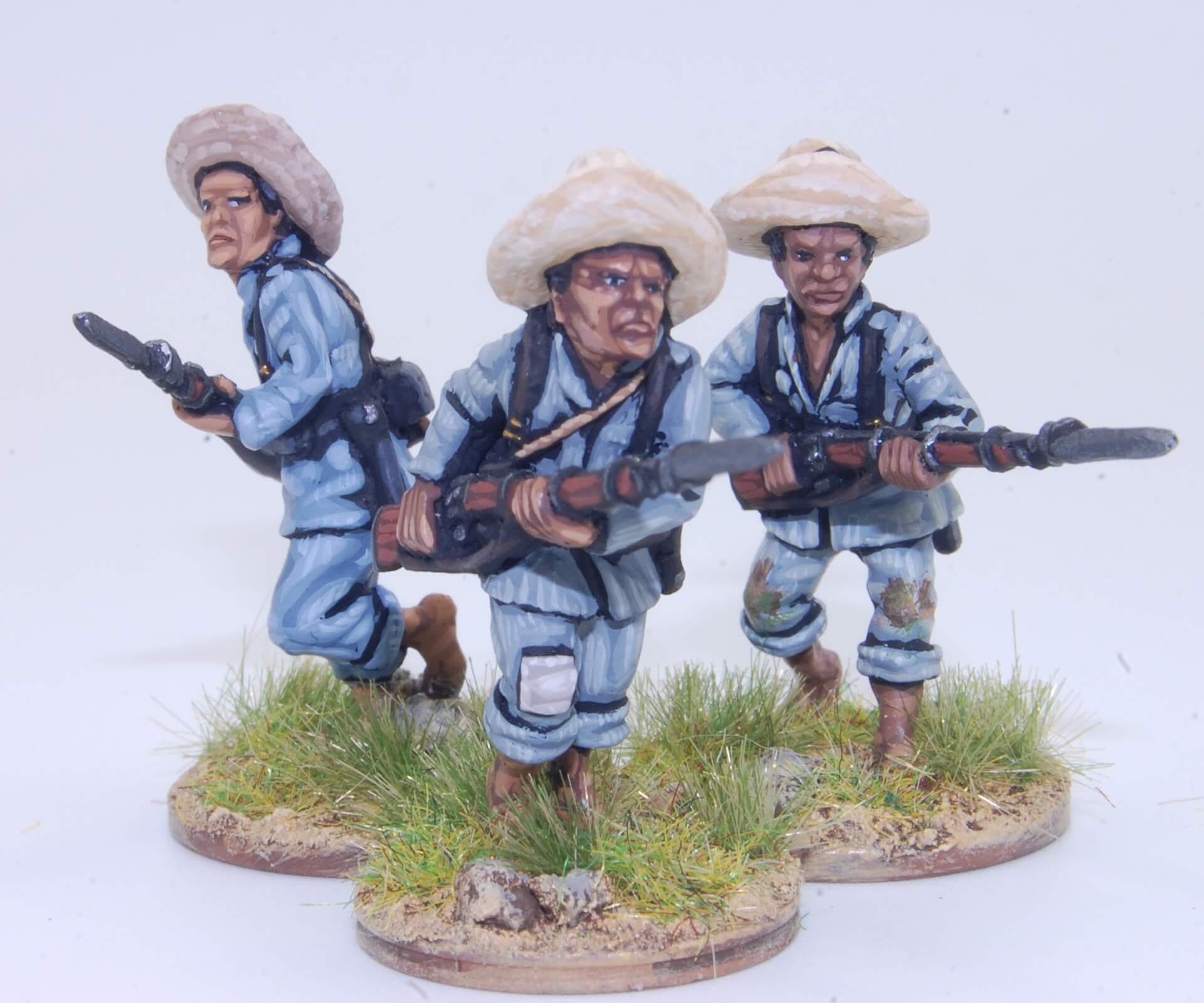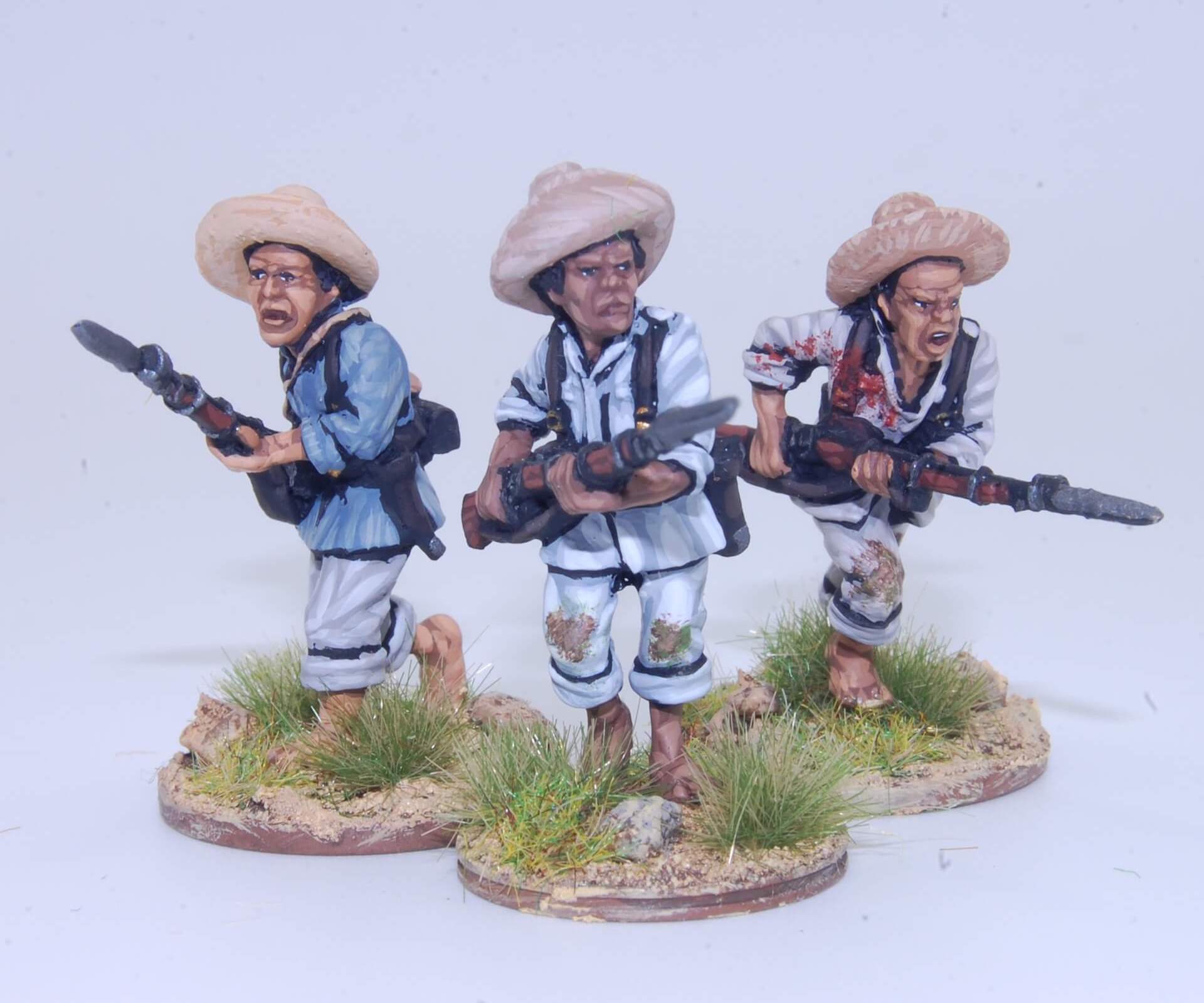Painting Filipinos
Javier Gómez "El Mercenario"
1898 Miniaturas

Painting Filipinos
MATERIALS
For this tutorial we will use different figures from the range of Filipinos from 1898 Miniatures, already available in our online store. We will use Vallejo Model Color paintings (three-digit numerical references, ex. 863), as well as primer spray of any brand (although I always recommend Citadel).
PREPARATION AND ASSEMBLY
First, although the 1898 Miniatures figures come extremely clean of burrs, with our modeling knife we will clean all kinds of metal leftovers, and glue the miniature with cyanoacrylate to an empty paint can to handle the figure at will during the painting process without having to touch it. Finally, we will prime the figure with a very thin layer of white or black spray, after which we will paint with Black (950).
Rayadillo uniforms
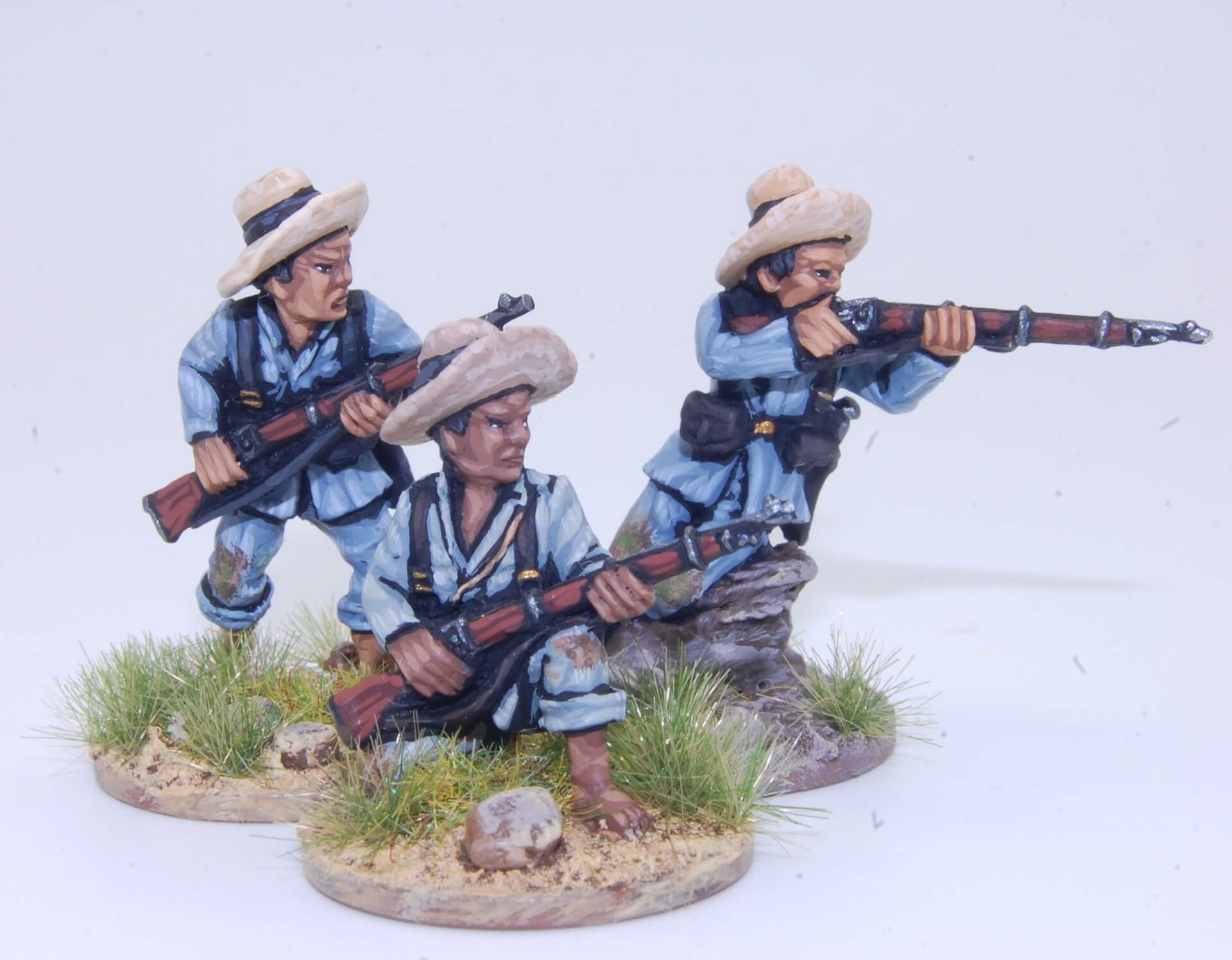
As we know that these uniforms had a considerable degree of wear, we would prefer to use as a base color French Blue (900), or this mixed with a bit of Cork Brown (843).
For the highlights, we will mix the base color with White (951), although we can also add a bit of Buff (976) to get dirtier shades, which will be more realistic.
White Uniforms
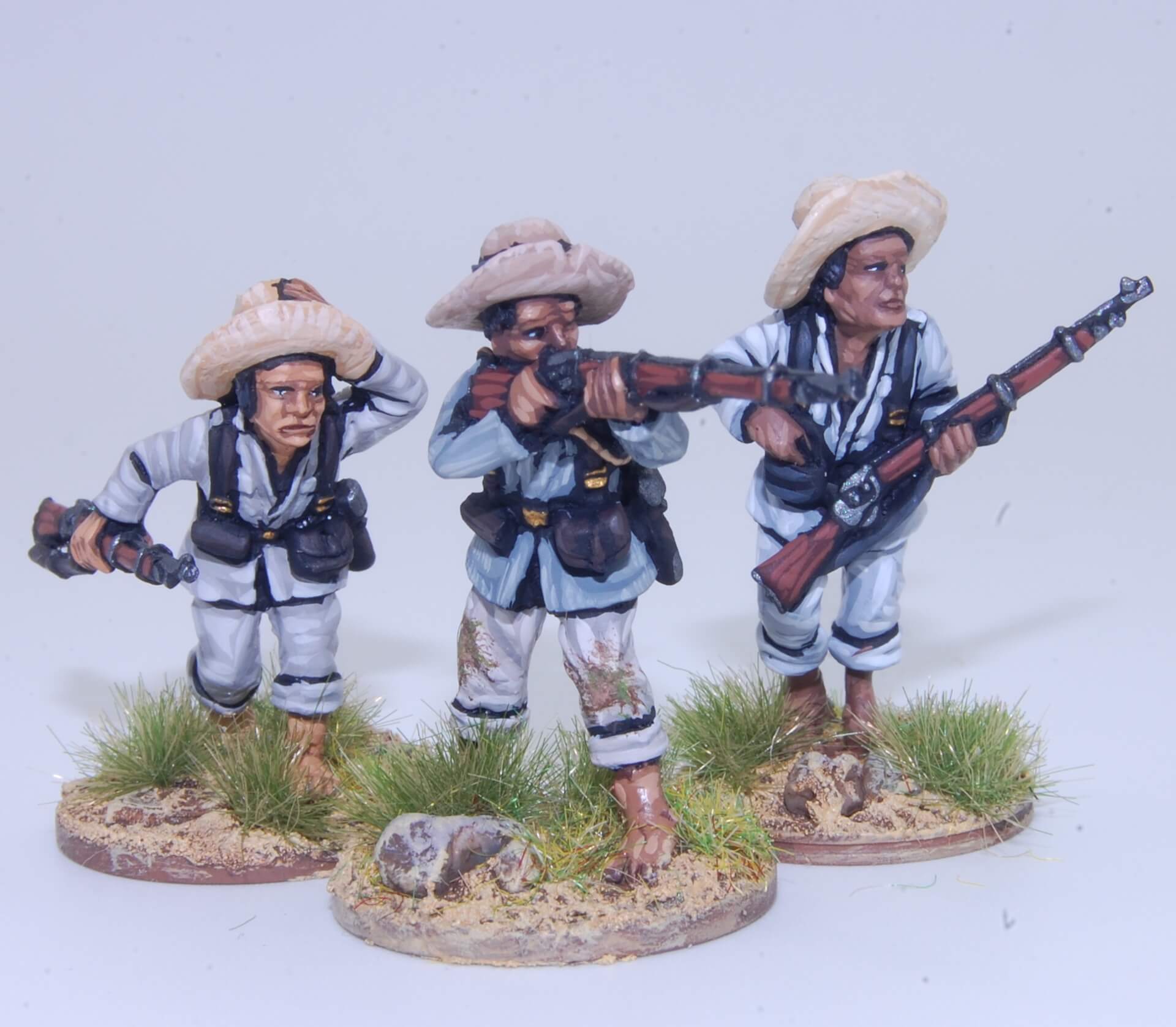
When we speak of white in terms of uniforms, we always speak of off white. For this we will use Light Gray (990) as base color, that we’ll mix with White (951) for the first and second light. We will never use pure white in the second light, always mixed with some gray, so that the final result is not too neat.
Alternatively, to get a dirtier color, we will use as base color a mixture of Light Gray (990) with Cork Brown (843). My preference is about 70% gray and 30% brown, but I leave it to your choice –we can even use different combinations to give even more variety to our figures. For the highlights, we will mix the base color with White (951).
Civilian clothes
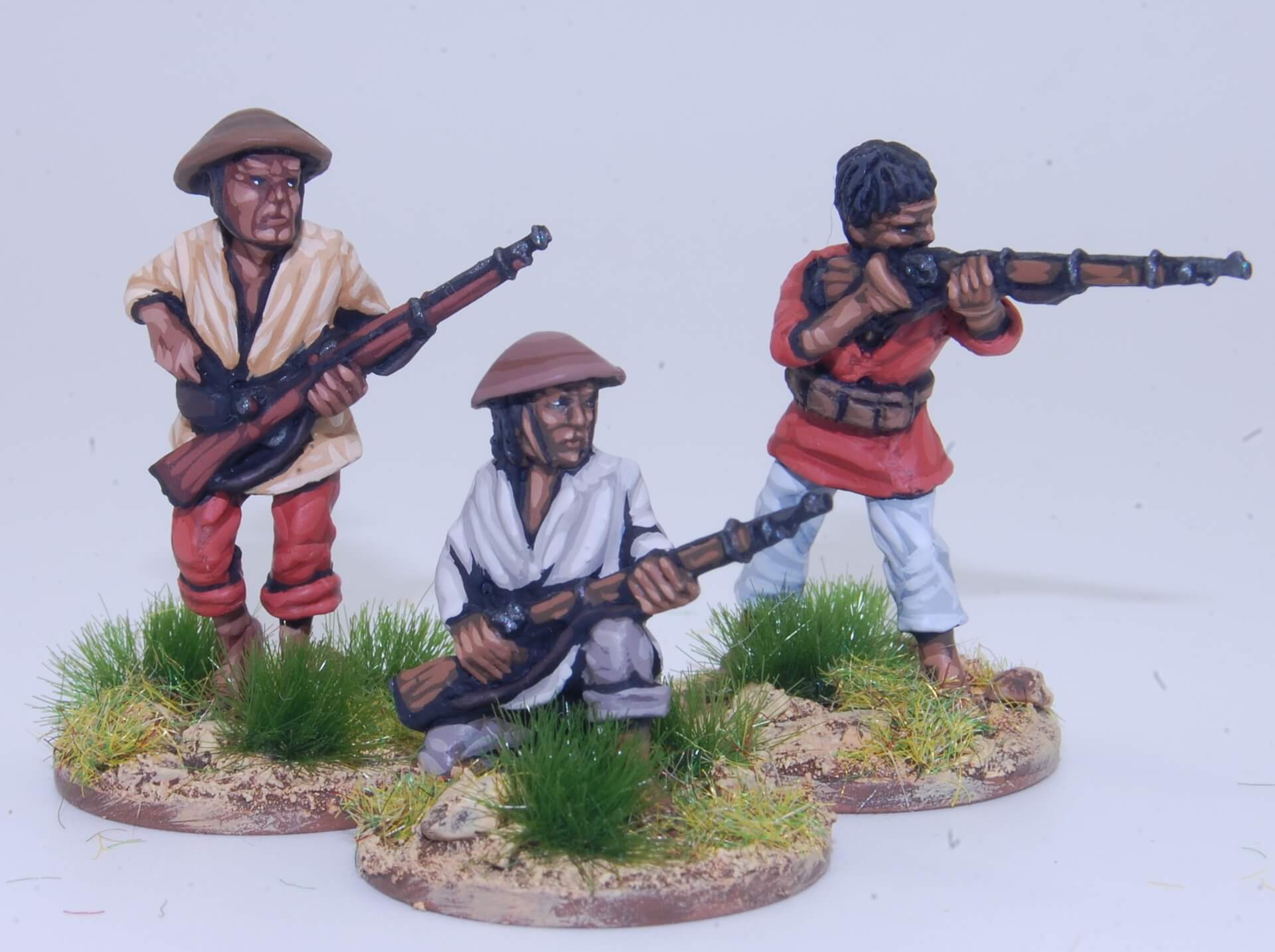
Traditional Filipino clothes are mainly white, for which the color combinations seen in the previous section are used. However, we can combine these garments with others of different shades.
First buff yellow, for what we will use as base of Desert Yellow (977) with a pinch of Light Gray (990), mixing with White (951) for the highlights. In addition, we can paint some of the garments of red (it seems that the fact of the red pants was the distinguishing element, and Aguinaldo himself used them). This tone can not be strong, so we will use as base color Cavalry Brown (982) mixed with a pinch of Chocolate Brown (872) to turn off a little the reddish tone of the first. For the highlights, we will add to the base color Red (947) or Scarlet (817) with a pinch of Iraqi Sand (819), for the reasons explained above.
Finally, we can paint any garment of brown, for which we will mix Chocolate Brown (872) with a bit of Neutral Grey (992) for base color, adding White (951) for highlights.
Insignia of rank


With the miniature of the white cap, we wanted to represent a post-1898 officer, with the system of shoulder-pads in the branch color with stars employed from that date. In both cases, we have used Cavalry Brown (982) as base color and Red (947) as the only light.


The figure on the left is a sergeant of the late Katipunan, in white uniform, double red chevrons on the shoulders, red lace around the wing of the hat (not exclusive to the NCos) and national cockade. Same combination of colors as in the previous case, although in the case of the chevrons we apply a single highlight.
Finally, the standard bearer is a post-1898 sergeant, with triple green gallon in the cuffs. We will paint it with Military Green (975) as base color, Medium Green (891) for the single highlight.
Skin and ethnic features
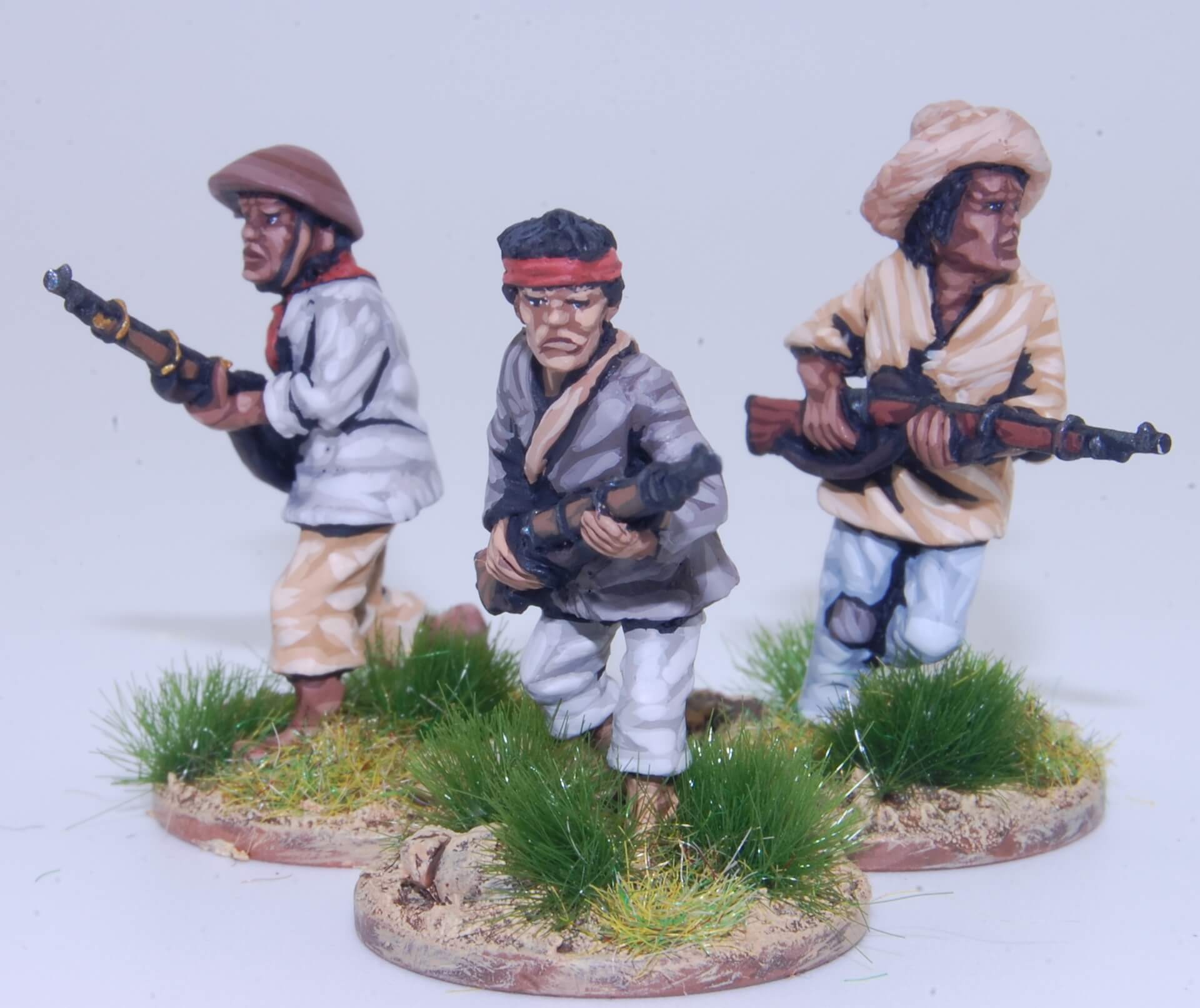
These populations generally have soft ethnic features and skin tones, although in this article we wanted to represent a certain variety of tonalities. For painting Filipinos we will propose three options:
-For a lighter shade, we will use Beige Brown (875) as base color, mixed with Flat Flesh (955) for the highlights. As long as we add nothing of Light Brown (929), we will get a light but sallow tone, different from that of the Spaniards.
-For darker tones, we will use Chocolate Brown (872) for a more dun shade, or Flat Brown (984) for a more reddish tone. In both cases we will mix the base color with Flat Flesh (955) and, in this case, also with a bit of Light Brown (929).
In addition to the tones, to represent the somewhat more prominent cheekbones I have avoided in almost all cases painting the eye bags, and I have painted the lower lip of the color of the second highlight.
REFERENCES
Gómez Valero, J. (2015): Painting Wargame Miniatures. Barnsley: Pen & Sword.
¡Rayadillo! The Spanish Colonial Uniform Research Project. William Combs website.
Filipino uniforms (1896-1902) Katipunan and Republican Army.


